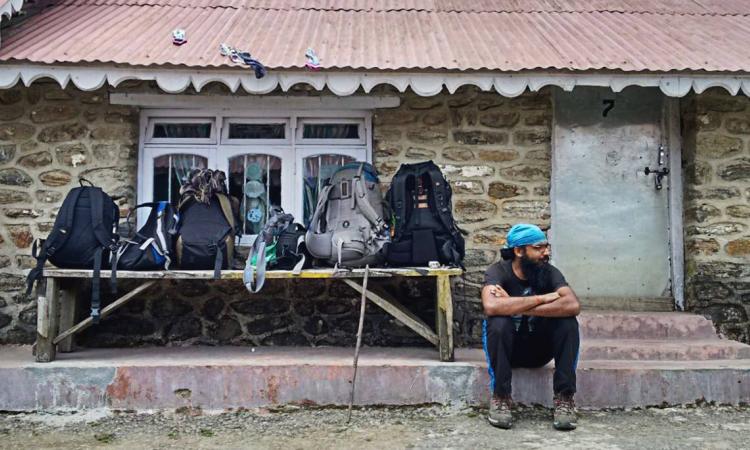
An aerospace engineer from IIT, Kharagpur, Siddharth Agarwal could have been drawing a fancy salary like any other 25-year-old if he hadn’t followed his passion. Born and bred in Kolkata, his curiosity of life around rivers and his interest in knowing it first hand to form the right perspective of it inspired him to undertake a 3000-km walk upstream of Ganga as a part of Veditum India Foundation's moving upstream project that is working to document and dynamically map India's rivers.
Siddharth loves to walk and has been experimenting with slow travel in the last couple of years. Slow travel, where he converses with people during the walks, has replaced his old perspectives on society, environment, and people with new ones.
On June 6, 2016, he started his journey from Gangasagar at the mouth of Bay of Bengal in Murshidabad district, West Bengal, where the trail of the Ganga ends. On his way to Gaumukh from where the Ganga begins her journey, he will make his way through some major points of interest at Kolkata, Farakka, Patna, Varanasi, Allahabad, Kanpur, Narora, Haridwar, and Tehri. After completing 2000 km in October 2016, he took a break due to his back injury. He is planning to resume the rest of his journey (1000 km) in February 2017.
Siddharth has undertaken two similar journeys in the past as well. In 2014, he travelled 2120 km from Kolkata to Mumbai on his bicycle. This was followed by a 700-km-walk across Rajasthan to raise awareness about its dying architecture.
He shares his experiences of the Ganga walk with India Water Portal.
What is the purpose of your walk?
Rivers have always interested me. They are the lifeline for not just the humans but also for many other life forms. My interest in exploring the stories around the Ganga, its forgotten people and the culture that existed over several centuries has motivated me to undertake this walk. I wanted to know how humans have affected the river, how the landscape around the river has changed over a period of time and what we have lost in the process.
Why did you choose the Ganga?
I have had a fascination for the Ganga ever since my childhood. The more I learned about the Ganga, my quest for knowing the river only increased. The Ganga is one of the most famous rivers in India known for its purity. But unfortunately, its water is not even fit for domestic use in several places. I want to do something to conserve the river and to do that, I needed to explore the critical issues affecting the Ganga and its environment.
What are your key observations during your Ganga walk?
I found less open spaces around the Ganga throughout my journey. In the last few decades, the open spaces have been taken for residential, industrial and commercial purposes. Along the banks of the Ganga, I found massive environmental and ecological destruction. I also found a drastic decrease in the faith of the people about the river as a symbol of purity. It has been replaced by talks on the increasing pollution levels in the river.
What is the perception of the people regarding the Ganga?
The talk around the Ganga is mostly religious in its context. It is rarely about the science of the river’s ecosystem. For example, most of the time, the people talked about the Hindu scriptures and told me that it was Bhagirath Muni (sage) who brought the Ganga to the earth and shared many other religious stories about the river.
Though the rural folks still maintain a strong cultural relationship with the Ganga and show interest in reviving the river, the citizens in the urban areas have little interest in improving the health of the Ganga.
Do people know about Clean Ganga Mission?
Most of the people along the banks of the Ganga have heard about the government’s Clean Ganga mission, but the people are also apprehensive about how the government will clean the Ganga without stopping industries from functioning around it and the faecal and other waste from entering the river.
Do you see any efforts from the government to revive the Ganga?
So far I have not seen any substantial efforts from the government to protect the Ganga. Instead, by allowing innumerable constructions and industrialisation around the river, it has severely compromised the health of the river system. The government has also not taken any substantial or visible measures to control the contamination of the river by the industries and the sewage. It has displaced lakhs of people for the development of roads, bridges, dams, etc. on the Ganga and has failed to rehabilitate them.
Do you feel that your walk can improve the condition of the Ganga?
I don't know, but I am sure voices of the people can have an impact on the government to act and provide better solutions to the people.